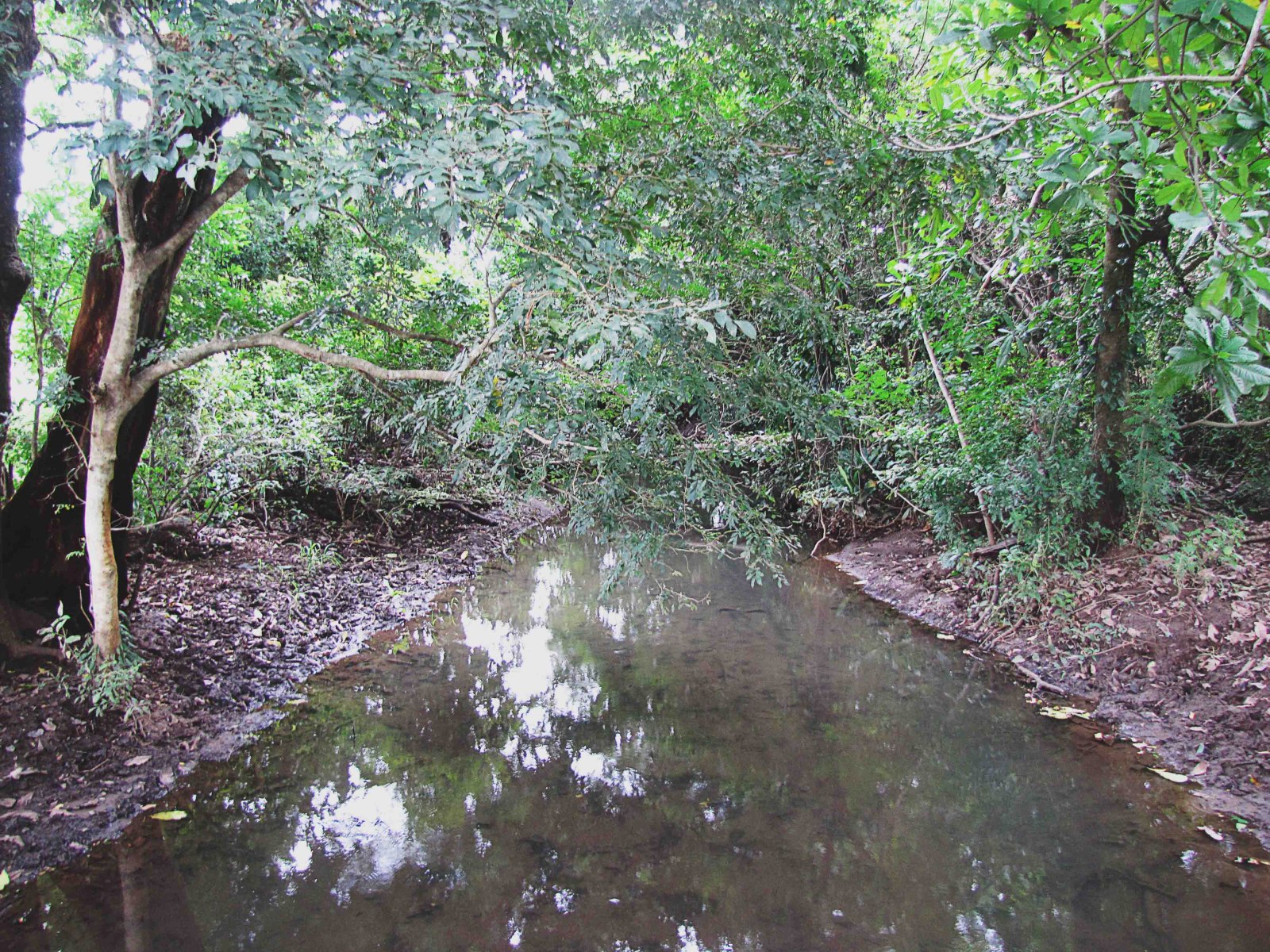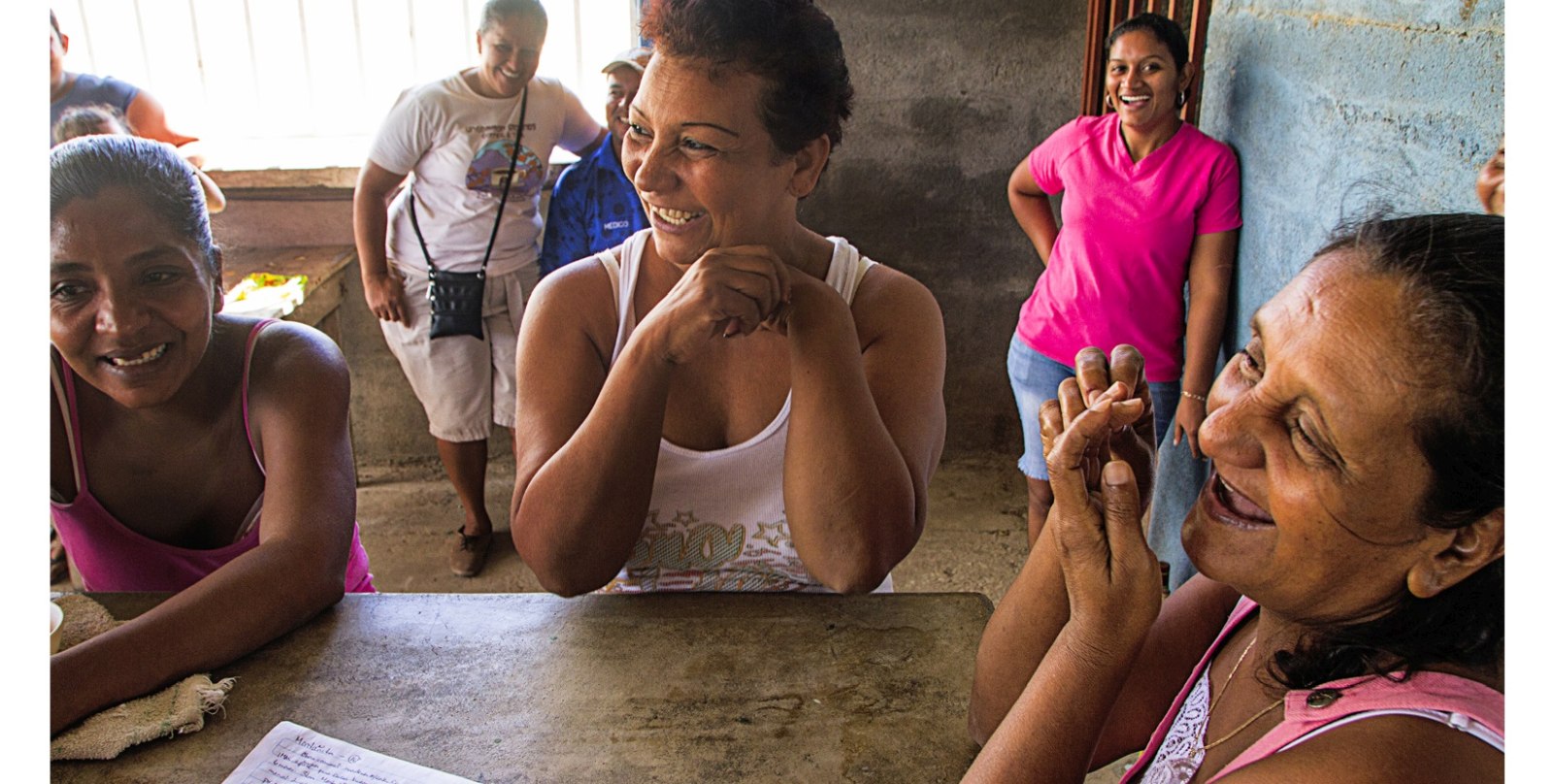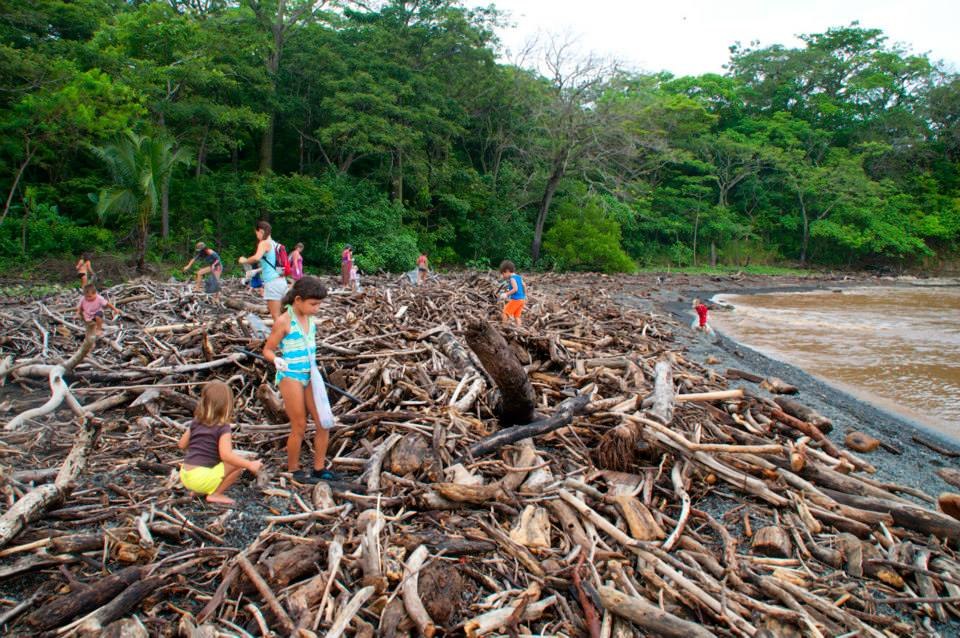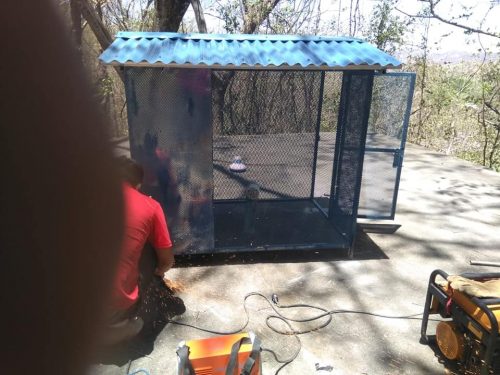
“This was basically a dead zone. The open-range cattle industry basically murdered the soil,” related Ray “Tarzan” Beise, owner of Pura Jungla nature reserve and eco community in Paraiso of Santa Cruz.
We are seven stories up, looking out across the treetops of the 100-hectare (247-acre) reserve, watching some monkeys hanging around. Beise has spent 25 years reforesting the land and protecting the animals from fire and hunters. To combat erosion caused by rain and wind, he created contours with brush so now most rainwater is absorbed into the soil and during the height of rainy season the water in the ravine runs clean and clear.
The reserve is part of the Nandamojo Watershed, which includes about 15,000 hectares (37,000 acres) of land, where about 4000 people live in the communities of 27 de Abril, Las Delicias, Rio Seco, Paraiso, Playa Junquillal, La Florida, Venado and San Jose de la Montaña. The non-profit organization Restoring Our Watershed (ROW) is trying to unite these eight communities in a collaborative effort to protect the watershed. This year, for the first time, they won the Ecological Blue Flag with one star, a national recognition of environmental efforts.
“Thinking on the level of the watershed is an extremely important concept because it’s basically the source of potable water for everyone who lives within that watershed and everyone’s actions are interrelated,” explained Matt Rosensteele, who oversees ROW.
Erosion is the Enemy
The project includes two main thrusts: revitalizing the ecosystem through reforestation and erosion control, and reinvigorating the local economy and food systems.
“The whole idea of the project is slowing water down, spreading it out and giving it as much time as you can to get down into the ground,” Rosensteele explained.
Fluctuating water levels and climate change are major concerns, according to Tom Peifer, an international agricultural development consultant who works with ROW and specializes in soil building and erosion control. He noted that data from the University of Costa Rica in Santa Cruz from 1947 up to 1953 recorded rainfall every month of the year. Now, however, there are many months without rainfall and during rainy season (May to November) rainstorms are shorter and more intense, which Peifer described as the “perfect storm for erosion.”
Some techniques they are using to combat erosion include creating contour lines at right angles to gravity, planting species like bamboo or vetiver grass, which controls erosion by trapping the soil in its roots and building up the ground, making fences to keep cows out and to break up pastures with windbreaks, and reforesting strips of land, especially along the riverbanks.
In the past two years, they have planted about 8000 trees in an effort to reforest, with a 15-20% survival rate. But efforts aren’t just directed toward the environment. “Bad economic situations are bad for the environment,” Rosensteele recognized. That is why they have been testing programs to stimulate local food production through microloans to small-scale farmers, and the most viable and successful activity they’ve tried is raising bees for honey. At present, five families are participating in the Bees for Trees program. The families receive small loans to start honey production in exchange for reforesting 10% of their land and later repaying the loan with jars of honey.
Pedro Antonio Gutierrez Hernandez, who has a family of four in Las Delicias, has been participating in Bees for Trees since July. He has 10 hives and hopes to expand. “It’s producing well,” he assured. “For me it means an improvement in the household economy.”
One of the biggest farms in the river valley, with 560 hectares (1380 acres), is Finca La Norma, which was used for cattle farming, but the current owner, Sam Patterson, is focusing on ecotourism with a canopy tour, horseback riding and mountain biking. “The idea is to make a research center here to attract more people to learn about nature,” explained Diego Elizondo Bravo, who works with Canopy Aventura (call 2685-0063 for more information).
They are also reforesting the farm. In 1995, 25 hectares (61 acres) were reforested with teak wood and native species; later 50 more hectares (123 acres) were planted and this year another ½ hectare (1 acre) near the water spring and along the riverbank were reforested, according to Diolis Matarrita Baltodano, who has worked on the farm for 26 years, through multiple owners. He is 61 and remembers when water flowed in the Nandamojo River year round. Now it dries up four to five months of the year. “These past years have been too dry, not like before,” he remarked. Matarrita affirmed that they are hoping to collaborate more with the Watershed Project.
Rosensteele admitted that he doesn’t expect to see big changes in the watershed for decades, but by motivating the community members to take ownership, step by step, he hopes the Project will ensure a sustainable future for generations to come.
For more information or to donate to the project, visit www.ourwatershed.org.







Comments